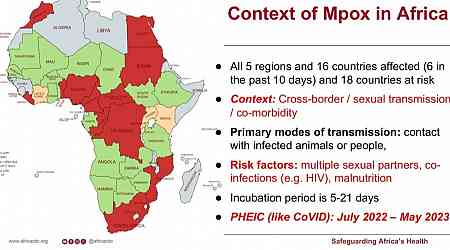The level of the sea globally is rising faster and higher than ever before, creating what the United Nations has described as an "urgent and escalating threat" to people around the world.
The UN Secretary-General António Guterres has been visiting the Pacific Ocean nations, Tonga and Samoa, where sea level rise has been one of the key issues he has been discussing with the communities he has met.
On 25 September, global leaders and experts will gather at the UN to discuss how best to address the threat.
Here's what you need to know about sea level rise:
High water mark
It is estimated that the oceans have risen by approximately 20-23 centimetres (8-9 inches) since 1880.
In 2023, the average sea level globally reached a record high the UN's World Meteorological Organization (WMO) confirmed, according to satellite records kept since 1993.
Worryingly, the rate of increase over the last 10 years is more than twice the rate of sea level rise in the first decade of the satellite record, from 1993 to 2002.
What causes sea levels to rise?
Rising sea levels are the result of ocean warming and the melting of glaciers and ice sheets, phenomena which are the direct consequences of climate change.
Even if global warming is limited to 1.5°C above pre-industrial levels, which is the goal that countries around the world set as part of the Paris Agreement of 2015, the planet will see a sizeable increase in sea water levels.
It is worth noting that ocean circulation patterns, such as the Gulf Stream, can lead to regional differences in sea level rise.
What are the consequences?
Rising sea levels have wide-reaching implications not just on the physical environment, but also the economic, social and cultural fabric of vulnerable nations across the world.
Saltwater flooding can damage coastal habitats, including coral reefs and fish stocks, agricultural lands as well as infrastructure, including housing, and can impact the ability of coastal communities to sustain their livelihoods.
Flooding can contaminate fresh water supplies, promote waterborne diseases threatening people's health and lead to stress and mental health problems.
At the same time, tourism revenues, a key economic driver especially in many small island developing States (SIDS), can suffer as beaches, resorts and other tourist attractions like coral reefs are damaged.
The combination of so many factors can force people to leave their homes, relocate to higher ground where available or ultimately migrate, which in turn disrupts economies, livelihoods and communities.
It is perhaps not surprising the UN Secretary-General, Antonio Guterres, has described the phenomenon as a "threat multiplier".
What is the link between rising sea levels and climate change?
Quite simply, sea level rise is a symptom of climate change.
As global temperatures increase due to climate change, the oceans absorb much of this excess heat. Warmer water grows in volume, a process known as thermal expansion, which is a significant contributor to sea level rise.
Rising sea levels also create a catastrophic circular feedback loop.
For example, mangrove forests, which protect coastal habitats and store damaging carbon gases that contribute to climate change, can quickly become overwhelmed losing their protective qualities. Fewer mangroves means more harmful gases in the environment, which drives climate change, and with increased temperatures, sea levels will rise even further.
Which countries are most affected?
It's estimated that around 900 million people, that is one out of every 10 people on earth, live in close proximity to the sea.
People living in the coastal zones of densely populated countries like Bangladesh, China, India, the Netherlands and Pakistan will be at risk and potentially suffer catastrophic flooding. Also at risk are major cities on every continent, including Bangkok, Buenos Aires, Lagos, London, Mumbai, New York and Shanghai.
Small islands with low-lying land areas are arguably facing the most critical threats. Sea level rise and other climate impacts are already forcing people in such Pacific Ocean nations as Fiji, Vanuatu and the Solomon islands to relocate.
What can be done to counter sea level rise?
The single most consequential action that can be taken is to slow down global warming by reducing greenhouse gas emissions, the primary driver of climate change.
Meanwhile, mitigating and adapting to higher sea levels has taken on new importance.
A wide range of solutions, which obviously come at a cost, are available including: building infrastructure, such as sea walls and storm surge barriers, to protect against flooding and erosion; improving drainage systems and constructing flood resistant buildings; restoring natural barriers like mangroves; and protecting wetlands and coral reefs to absorb wave energy and reduce the impact of storm surges.
Many countries are also stepping up their disaster risk reduction plans as well as through UN-supported early warning systems to deal with sea level-related incidents.
In some cases, communities may also be relocated from vulnerable coastal areas as part of adaptation measures, an approach known as managed retreat.
How the UN helps
Countering sea level rise requires a comprehensive and internationally coordinated approach, which the United Nations is uniquely equipped to lead.
The UN Framework Convention on Climate Change (UNFCCC) facilitated the Paris Agreement to limit global warming which is essential for reducing the extent of future sea level rise.
The UN also provides support to SIDS and is working with the global community to provide financial support especially through the Loss and Damage Fund to the most vulnerable countries and to help them adapt to climate change impacts.
Learn more about how the UN helps tackle the challenge of rising sea levels here.




























